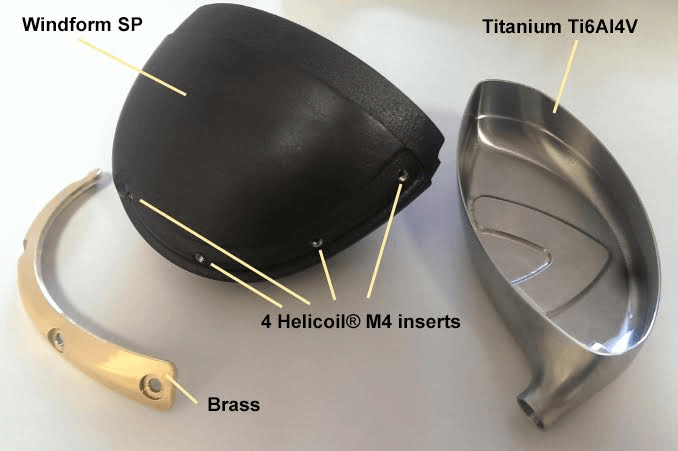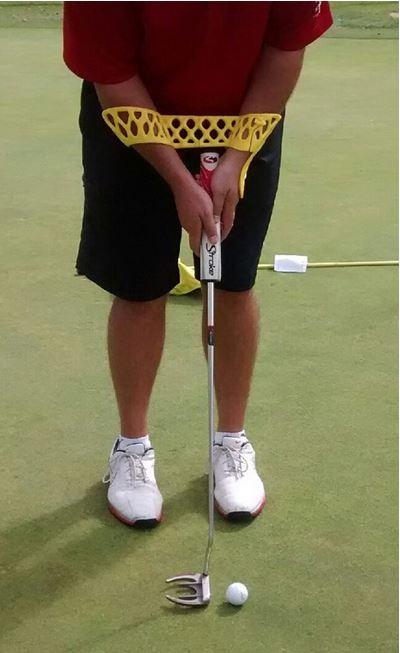Sports equipment is a multi-billion dollar business operating globally at many price points. We can buy inexpensive gear at stores such as Decathlon, but, elsewhere, also super-premium tennis rackets, golf clubs, bikes, shirts, and balls. We’re living in an age where being a Pro is simply a question of how much you’d rather spend than how much time you’d like to put in. There are super affordable squash racket brands, premium ones that sponsor athletes, and mid-market brands for sporting goods retailers worldwide.
I think that, in gloves and other gear, we will see 3D printed and mass customized products emerge. We already see a lot of 3D printing activity in safety gear as well, including mouth guards. Specifically, in helmets, products are also emerging. There has also been a lot of hype on shoes that are 3D printed. Additionally, there is a very good business case for handles of all kinds such as bike handlebars. We’re seeing a lot of bike parts emerging in a lot of categories, as well. I’m sure that 3D printing and the sports industry will be key to the futures of each across the board. But, just specifically for sticks and rackets, I think that there is a strong case to be made.

A CRP case study on the Krone golf club.
Only in the racket and clubs category, we have polo mallets, badminton racquets, fronton paddles, paddle rackets, table tennis paddles, ice hockey sticks, field hockey sticks, baseball bats, and softball sticks. There are also ski poles and lots of gloves to go with them. A lot of these products are commodity items, which can be purchased for ten or twenty dollars, but there are also high-end versions for aficionados, those who have money or those very passionate about the sport.
One brand, Wilson, sells tennis rackets from $26 to $1000 online. Table tennis paddles range from $3 to $260 and lacrosse sticks from $29 to $250. You can get a carbon fiber ice hockey stick for $660 or buy one for $18. At the same time, there is increased feature differentiation and a cosmetics/shoe industry buzz word differentiation: graphene, nano, carbon, FSI Sweet Spot etc. More categories are also emerging with kids’ rackets, power rackets, control rackets, and spin rackets, for example.

Ping’s 3D printed putter.
In an evolving space such as this, mass customization is a logical endpoint. If one can differentiate and make significantly more margin with essentially the same product via the same brand and channel, the case for mass customization is especially powerful. 3D printing or mass customization can be expensive, especially for large parts. The great thing about customizing a racket or stick is that we can customize just the handle to get a better, more comfortable grip or control. We can also add small elements to the existing stick or racket to get more spin or to offset or enhance someone’s natural slice or spin effect, for example. This means that, for rackets and sticks, we can apply 3D printing and mass customization where it maters to parts that are relatively small but high value with high touchpoints for the consumer. The mass customized 3D printed part could be a feature that drives purchases. At the same time, a hollow, super-expensive, mass-customized item can also serve a bracketing effect that makes all of your other stuff look very quotidian in price by comparison, while driving online buzz and PR.

This less than comfortable looking 2015 putting trainer helped people follow new rules.
Here are just a few examples of what types of features can be incorporated into sticks using 3D printing:
- Customized grip textures could be more comfortable than existing grip surfaces.
- Grips could also be engineered with wicking properties to reduce sweaty palms and make them better to hold throughout the match.
- The same absorbent surfaces and structures that are being used for the Kupol and NFL helmet challenge can reduce impact, reduce fatigue, and make 3D printed sticks more comfortable.
- High-speed impacts can be specifically reduced with 3D printing the exact structure for that impact.
- Sweet spots can be specifically addressed through engineering structures to enlarge them or make them easier to find.
- Lattices and infill patterns could be engineered to compress slowly over time, providing more comfort for minutes or hours as required.
- Parts could be printed in such a way as to let you feel in the handle where the right point is for you to press, apply pressure or rotate.
- Slicing can be reduced or amplified.
- “Reverb” surfaces could be constructed that deform and give a ball extra power or topspin.
- Grip, spin or higher power 3D printing infills could be developed.
- Higher grip surfaces for ball contact could be made, as well. Parts of clubs could be more absorbent or rigid to make them easier to use or easier to use perfectly.
- We could even make very many corrective clubs that could help people improve swings, for example.
- Biomechanical data could lead to a certain handle or club length that could provide you and you alone optimal power.
- Handle thickness could be customized to give your hands more grip as could the size of the handle.
- Products could be made more lightweight via 3D printing.
- On-demand production could allow you to make high-value parts in-store or in-country and marry them to standard parts made in China.
- True biomechanical customization could also be used to reduce RSI or add to general comfort.
- For pro athletes, different racquet types could be made that exercise different shoulder muscle groups for example.
- Visual cues could be added to help that one person focus on that one spot where they should hit the ball for a certain effect.
- Modifications could be 3D printed to open sports goods up to professional parathletes and other players with disabilities.
- And you could make people customize them to look just like they want them to.
All in all, it is clear to me that 3D printing is coming to sporting goods. There are still some hurdles, as in shoes, equipment manufacturers will balk at the cost of 3D printed parts. Traditionally, soft and flexible 3D printed materials didn’t have the longevity needed for sports equipment either until recently. Newer TPU grades by BASF and Lubrizol and PP from HP are helping to ameliorate this. In bicycles and helmets, we are seeing products reach the market, but in the future, we will be able to mass customize even the simple stick.
Subscribe to Our Email Newsletter
Stay up-to-date on all the latest news from the 3D printing industry and receive information and offers from third party vendors.
You May Also Like
Further Understanding of 3D Printing Design at ADDITIV Design World
ADDITIV is back once again! This time, the virtual platform for additive manufacturing will be holding the first-ever edition of ADDITIV Design World on May 23rd from 9:00 AM –...
3D Printer Maker EVO-tech Reborn as NEVO3D — Once More With Feeling
EVO-tech was a 3D printing service and original equipment manufacturer established in 2013 and based in Schörfling am Attersee, Austria. The company produced high-quality material extrusion systems featuring linear bearings,...
3D Systems Brings 3D Printed PEEK Cranial Implant to the U.S. with FDA Clearance
For more than 10 years, 3D Systems (NYSE:DDD) has worked hand-in-hand with surgeons to plan over 150,000 patient-specific cases, and develop more than two million instruments and implants from its...
CDFAM Returns to Berlin for Second Annual Symposium
The second CDFAM Computational Design Symposium is scheduled for May 7-8, 2024, in Berlin, and will convene leading experts in computational design across all scales. Building upon the first event...































